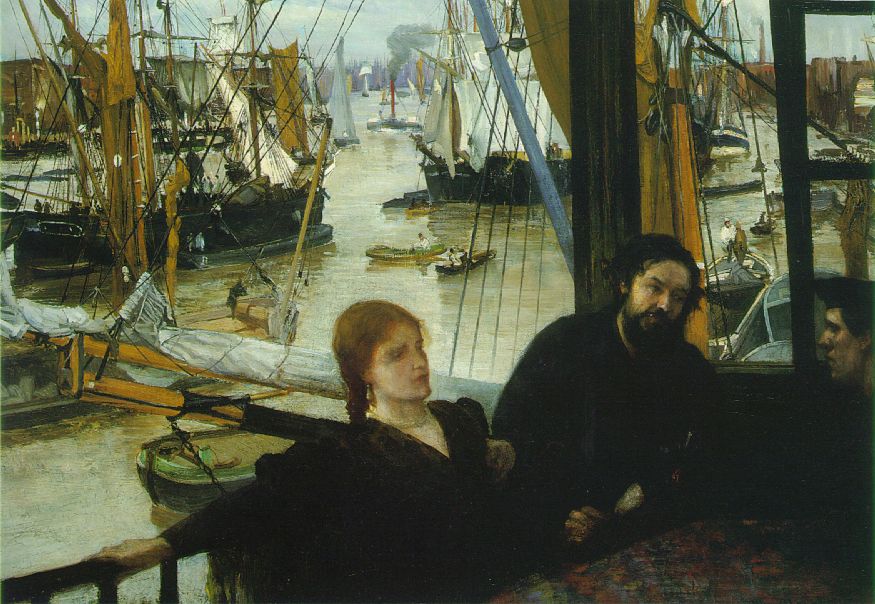In October 1860, Whistler began work on Wapping. This painting was to undergo extensive reworking as Whistler's style continued to evolve and he did not consider it finished until nearly four years later. Most of the rework involved the foreground figures and has resulted in a much-darkened area of the canvas in comparison to the river background. The reworking was a result of Whistler's deepening interest in realism under Courbet's influence.
The subject of prostitution, depicted as a sexual transaction on the Wapping waterside, was popular in the Victorian era. Normally, however, it was presented with heavy moral overtones. Indeed, originally Whistler had painted much more of a harlot, with plunging neckline and even a knowing wink. Over time, he removed nearly all narrative from the portrayal as he accepted the reality of what was a normal occurrence in the Wapping area. Compositionally, the background of the bustling river business offers a reflection of the business being transacted between the three figures in the foreground.


 James Abbott McNeill Whistler
James Abbott McNeill Whistler